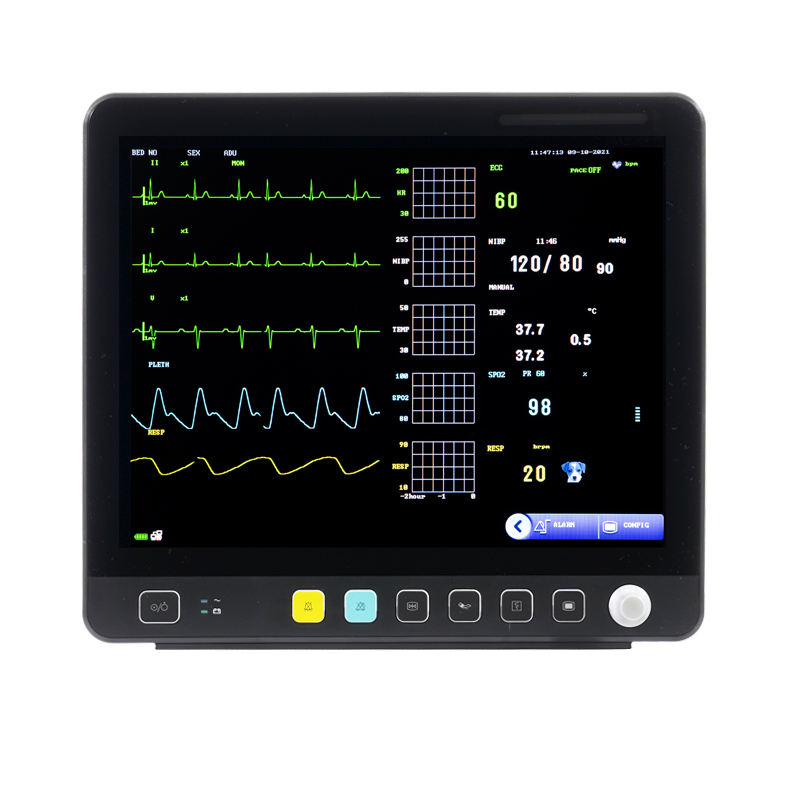Address
304 North Cardinal St.
Dorchester Center, MA 02124
Work Hours
Monday to Friday: 7AM - 7PM
Weekend: 10AM - 5PM
Veterinary medicine plays a crucial role in caring for the health and well-being of animals. As veterinary practices have advanced, so too have the technologies used to monitor patients during procedures and recovery. One such technology that has become increasingly important is the veterinary monitor. In this post, we will explore the key benefits that veterinary monitors provide for both veterinarians and patients.

Veterinary monitors allow veterinary staff to closely track various vital signs during all stages of a patient’s care. By continuously monitoring heart rate, oxygen saturation, respiration rate, and other parameters, veterinary monitors help ensure patient safety and optimal health outcomes. Some of the main benefits of veterinary monitors include:
| Parameter | Description |
|---|---|
| Heart rate | Beat-by-beat heart rate, arrhythmias |
| Oxygen saturation | Percentage oxygen levels in the blood |
| Respiration rate | Breaths per minute |
| Temperature | Body temperature |
| Invasive blood pressure | Systolic, diastolic, and mean pressures |
| 3-lead ECG | Electrocardiogram for detailed heart analysis |
| End-tidal CO2 | Carbon dioxide levels in exhaled breath |
| Inhalant agent | Levels of anesthetic gases |
The ability to continuously track this range of vital signs is extremely valuable for veterinary patients undergoing procedures or recovering from surgery, illness, or injury. Veterinary monitors have truly transformed veterinary medicine.

With the many veterinary monitor options available, selecting the right monitor for a veterinary practice requires careful consideration of key factors:
Proper training is a must for veterinary staff to fully leverage all of a monitor’s functionality safely and accurately. Monitors should be checked daily to ensure proper operation. Early detection of any issues allows timely repair/replacement without compromising care. With responsible selection and use, veterinary monitors become invaluable clinical tools.
In conclusion, veterinary monitors have become essential tools for the veterinary healthcare team. By continuously tracking multiple vital signs, monitors ensure the highest standards of patient surveillance. This allows any developing issues to be caught early before escalating into emergencies. Monitors provide objective clinical data for treatment guidance and recordkeeping too. With proper selection, training, and use, veterinary monitors deliver immense benefits for patients and peace of mind for veterinary staff and pet owners alike. Overall, they have truly advanced veterinary medicine by optimizing patient safety, health outcomes, and the standard of care provided.
Q: How often should veterinary monitors be calibrated?
A: Most veterinary monitors are designed to self-calibrate with each use. However, annual calibration checks with biomedical equipment services are recommended to ensure accuracy over the long-term.
Q: What types of patients benefit most from veterinary monitoring?
A: Any patient undergoing anesthetic, surgical, critical, or intensive care procedures is a candidate for monitoring. Geriatric, high-risk, or very ill patients especially benefit from the vigilance monitoring provides.
Q: How do veterinary monitors help during recovery?
A: Post-operative monitoring allows early detection of issues like low oxygen levels, irregular heartbeats, or respiratory depression so interventions can prevent emergencies. Monitoring also reassures owners during an anxious waiting period.
Q: What are some common veterinary monitor alerts?
A: Common alerts include low or high heart rate, respiration rate outside normal range, oxygen saturation below safe thresholds, and abnormal heart rhythms or pressures. These prompt staff to swiftly evaluate and treat the underlying problem.
Q: How can I learn more about choosing a veterinary monitor?
A: Reach out to your vet to discuss your facility’s needs. Veterinary equipment vendors can provide in-depth product demos and guidance. Online research, webinars, and veterinary publications also offer valuable selection advice.
